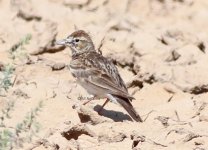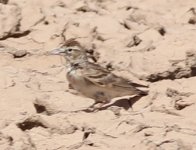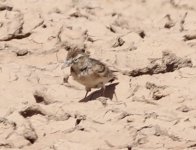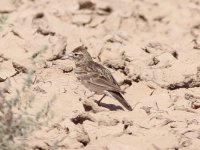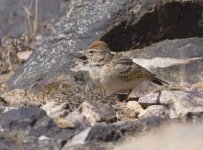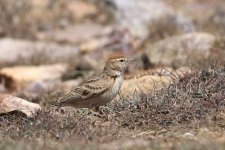Iraq Babbler
Well-known member
Dear All,
We found this lark in the south-western desert (Iraq-Saudi borders) in mid May.
Regardless to common filed marks with Greater Short-toad Lark, It has distinctively red-chestnut crown with grey-steel strong bill. I never experienced such a jizz/plumage of any native/passage migrant Greater STL!
However, the possibility of this bird being Blandford’s GSL (Calandrella blanfordi) in Iraq is low, as it is restricted to SW Arabia and vagrant to Oman.
Your experienced views are highly acknowledged and appreciated.
Omar
We found this lark in the south-western desert (Iraq-Saudi borders) in mid May.
Regardless to common filed marks with Greater Short-toad Lark, It has distinctively red-chestnut crown with grey-steel strong bill. I never experienced such a jizz/plumage of any native/passage migrant Greater STL!
However, the possibility of this bird being Blandford’s GSL (Calandrella blanfordi) in Iraq is low, as it is restricted to SW Arabia and vagrant to Oman.
Your experienced views are highly acknowledged and appreciated.
Omar




